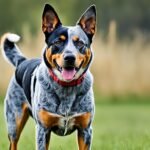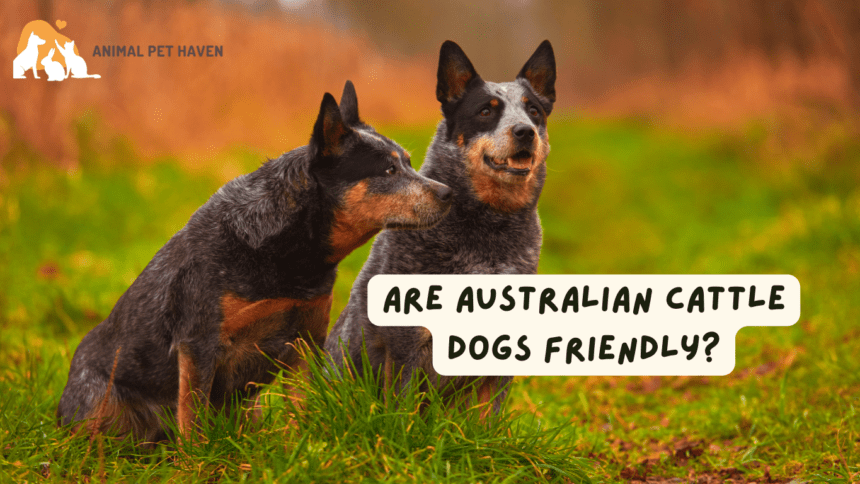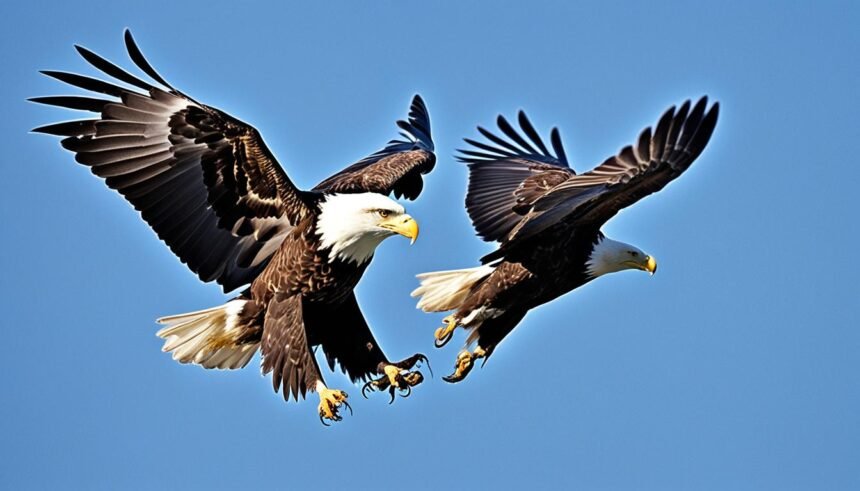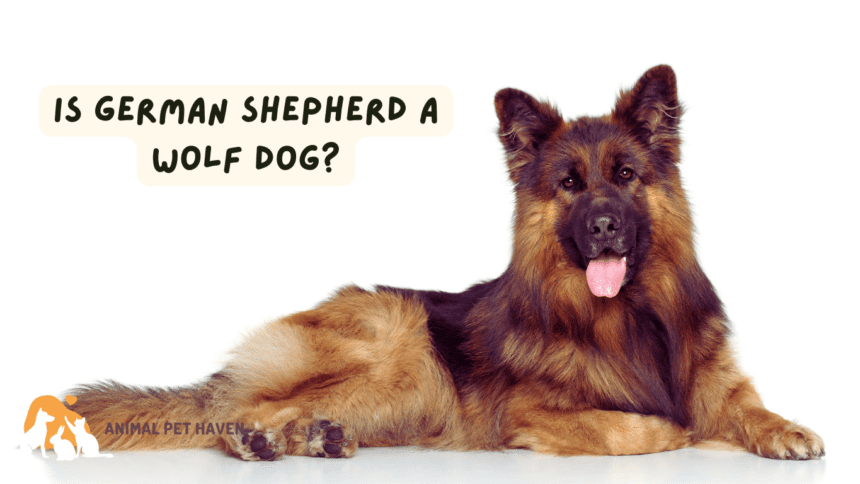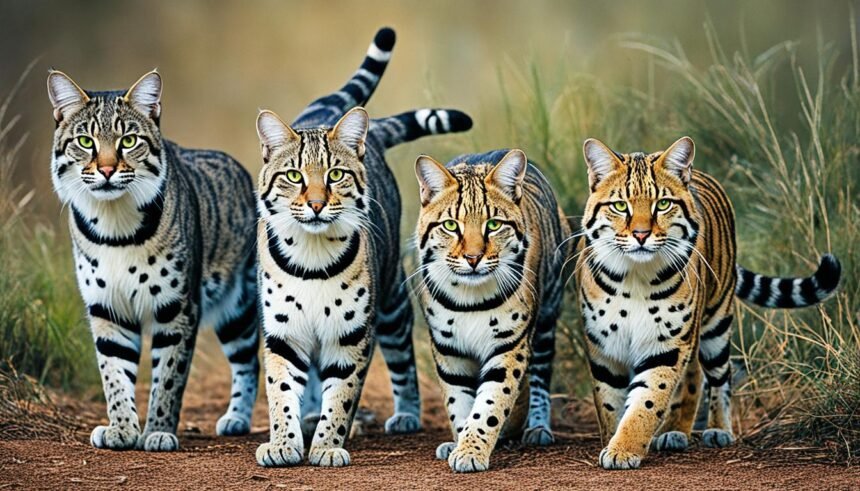There are many cattle dog types of herding dogs known for their excellent skills. They have worked with farmers for a long time. These cattle dog breeds include the Australian Cattle Dog and the German Shepherd. Each breed has special skills and behaviors.
Even though people keep these dogs as pets, they still have strong instincts for herding. These instincts can help them work or be a great friend to you. By knowing about different herding dog types, you can choose the best one for you. This article looks at popular breeds like the Australian Cattle Dog, Border Collie, and Australian Shepherd. It will show you how amazing these canines are.
Introduction to Herding Dogs
For thousands of years, herding dogs have helped farmers and ranchers. They’ve guarded different kinds of livestock like cattle and geese. These clever and active breeds are loyal. They love working with their human friends.
What Makes a Herding Dog?
Until 1983, the AKC called herding dogs working dogs. They wow with their speed, agility, and intelligence. Dogs like Border Collies love to control the livestock’s movement. Even nipping at cattle’s heels to guide them.
Herding breeds may have a strong prey drive. This drive can even vary within the same breed, based on genes. They follow a full predatory path. This involves orienting themselves, eyeing, and then chasing.
Characteristics of Herding Breeds
Herding dogs are often described as spunky, alert, and full of energy. They need both physical and mental activities. This keeps them happy and out of trouble. They are born with great stamina and energy, thanks to their history on farms.
Owning a herding dog means looking for activities to satisfy their instincts. Things like agility and obedience help a lot. Without enough to do, they might create their own jobs. This can lead to unpleasant behaviors like chasing and excessive barking.
| Breed | Origin | Height (inches) | Weight (pounds) |
|---|---|---|---|
| Australian Cattle Dog | Australia | 18–20 (male), 17–19 (female) | 35–50 |
| Border Collie | England | 19–22 | 31–50 |
| German Shepherd | Germany | 24–26 (male), 22–24 (female) | 75–95 |
| Pembroke Welsh Corgi | Wales | 10–12 | 25–38 (male), 25–34 (female) |
Border Collies are famous for being smart. But they might show some obsessive behaviors. To stop these, making sure their living space is good and being aware of their feelings is key. Short and focused training sessions work best for teaching these clever dogs.
Many herding dogs have lost their herding instincts because of how they’ve been bred. This was either not caring about herding skills or focusing on looks. But, with the right care and training, herding dogs can be great for families. They fit well in various roles, from pets to sport dogs.
Australian Cattle Dog
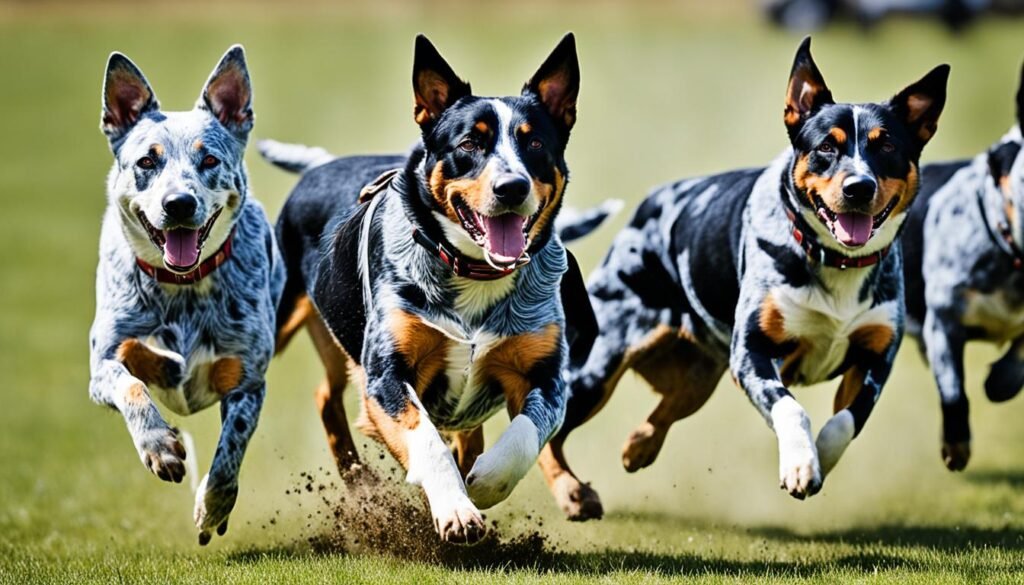
The Australian Cattle Dog, nicknamed the blue heeler, is truly special. It was crafted in Australia to round up cattle on farms. It’s a mix of British Smithfields, dingoes, collies, kelpies, and dalmatians. This mix brought the breed its herding abilities and intelligence.
History and Origin
The Australian Cattle Dog has fascinating origins. It comes from wild dingoes crossed with Dalmatians, Kelpies, and Collies. Thomas Simpson Hall, an Australian colonist, is key. He mixed Collie types with dingoes to create a recognized breed.
These dogs were originally bred for herding. But they’ve turned into more than that. They make awesome company for people who love loyalty and smarts.
Temperament and Traits
Australian Cattle Dogs are cautious, loyal, and full of energy. They’re super smart and great at keeping watch. Once they bond with someone, they’re totally devoted.
But all that energy means they need a lot of exercise. And they’re happiest when they have a job to do. For them, mental workouts are just as key as physical ones.
| Trait | Description |
|---|---|
| Height | 43-51 cm (17-20 inches) for females, 46-51 cm (18-20 inches) for males |
| Weight | 15-22 kg (33-49 lb) |
| Coat Colors | Red and blue (standard), chocolate and cream (faults) |
| Intelligence | Ranks 10th in Stanley Coren’s The Intelligence of Dogs |
| Temperament | Protective, loyal, cautious with strangers |
Training and Exercise Needs
Australian Cattle Dogs need lots of training and activity. Because they were born to herd, they’re not couch potatoes. They can join in on herding, dog sports, or other fun tasks.
They must exercise their brains too. Without proper outlets, they might pick up bad habits. Early socialization is also important. It helps them act well around others.
Thanks to good training, socializing, and exercise, these dogs are great pals. They’re a perfect match for active and committed pet parents.
Border Collie
The Border Collie is a dog breed with a unique history. It was first bred on the border of England and Scotland. These dogs stand out for their smarts and their ability to herd various animals like sheep. They are not just good at herding. Border Collies also play important roles in service, support, and even tactical work. This makes them one of the smartest and most versatile dog breeds around, excelling in things like agility and obedience trials.
Intelligence and Trainability
Border Collies are known for being super smart and eager to work with their owners. Thanks to their intelligence, they pick up new tasks and commands quickly. They love a challenge and need mental exercise to stay happy. With the right training, they become great companions. They do really well in different activities and sports for dogs.
Herding Instincts and Abilities
These dogs have a natural instinct to herd, which comes from their history of working on farms. With their agility and stamina, they can easily manage flocks of animals. Border Collies lead animals using just their eyes, their body, and quick steps. This shows off their powerful herding skills. Many of them still take part in herding competitions, keeping their working traditions alive.
| Characteristic | Description |
|---|---|
| Energy Level | High, requires plenty of exercise and mental stimulation |
| Trainability | Highly trainable, quick learner, excels in obedience and agility |
| Herding Instinct | Strong, natural ability to herd and control livestock |
| Compatibility | Generally good with other dogs and cats when raised together |
| Health | Generally healthy breed, may be prone to hip dysplasia and eye disorders |
Border Collies are full of energy and love to work. Yet, they also make great family pets given they get enough exercise and mental challenge. They are very smart and loyal to their families. With the right care, they fit well into different lifestyles, being both hard workers and treasured family members.
Australian Shepherd
The Australian Shepherd got its name from the western United States. It worked as a herding dog, helping with sheep and other animals. Known for their loyalty, energy, and eagerness to please, they are great as working dogs and family pets.
Appearance and Coat Colors
These dogs look unique, often with a merle coat and different colored eyes. They stand out with colors like black, blue merle, red, and red merle. They may also have white and tan markings.
Versatility as Working and Family Dogs
Australian Shepherds love having a job, especially a herding role. They do well in competitions like agility and obedience. Their smarts and ability to learn quickly also suit them for service and therapy.
They’re not just for work; they’re great as family dogs too. Their love and loyalty to their families make them wonderful companions. But, be ready for their high energy. They need an active life and lots of play to be happy and good.
| Characteristic | Australian Shepherd |
|---|---|
| Height | 18-23 inches |
| Weight | 40-65 pounds |
| Lifespan | 12-15 years |
| AKC Recognition | 1991 |
| Popularity Rank (2019) | 17th |
The Australian Shepherd is loved for its intelligence, loyalty, and adaptability. With the right care, they fit into various lifestyles. They bring joy to their owners for many years.
German Shepherd
The German Shepherd hails from Germany and is widely loved for great reasons. Originally, it was bred for herding yet gained varied job roles. Now, it’s an excellent family friend globally. These smart dogs remain in the top five popular breeds in the U.S.
German Shepherds shine in service and as family members. They are very adaptable and fit well in multiple roles. But, many end up in shelters due to their difficulty with change, born from loyalty to their first families.
Loyalty and Protective Nature
Some people fear German Shepherds due to their protective instincts. Yet, with early socialization and proper training, they’re unmatched. Their loyalty and herding background make them great guards and family defenders.
Adaptability to Various Roles
These dogs truly wear many hats, succeeding as herders and in vital jobs. They serve in police work, the military, and find people in rescue missions. Their sharp minds, fitness, and training ability suit them for these crucial tasks.
In dog sports, they do amazingly in agility, obedience, and tracking. This shows their keenness to work with people and learn fast. As family pets, they’re loving and gentle with kids when they get physical and mental activities.
| Characteristic | Description |
|---|---|
| Height | 22-26 inches (males), 20-24 inches (females) |
| Weight | 65-90 pounds (males), 50-70 pounds (females) |
| Coat | Double coat, medium length, shedding |
| Colors | Black and tan, black, sable, gray, liver, white |
| Life Expectancy | 9-13 years |
In sum, the German Shepherd proves its value as a top working and family dog. With the right care, these massive, intelligent dogs bring a lot to any setting.
Cattle Dog Types
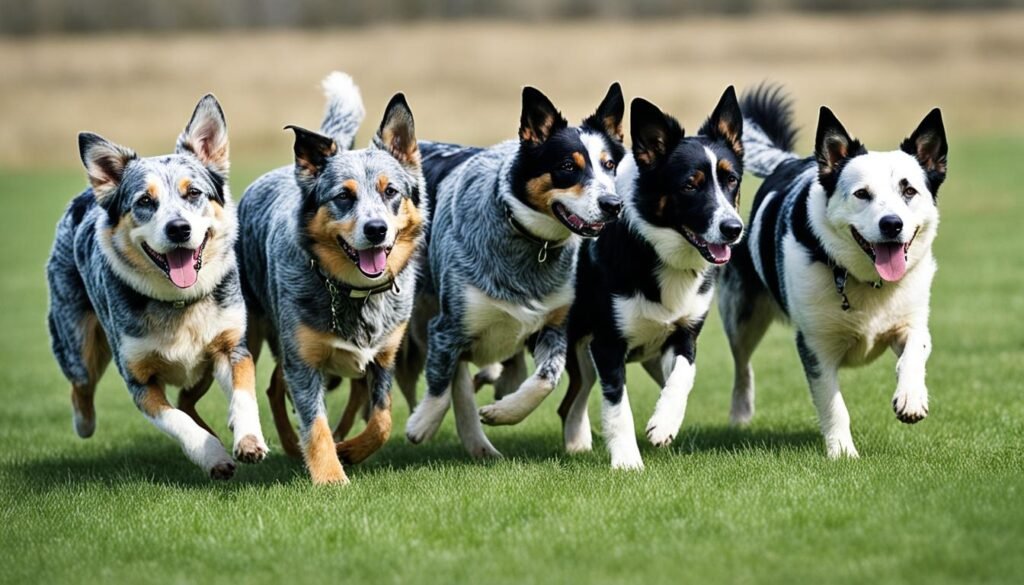
There are several types of cattle dogs known for their unique skills. The Australian Cattle Dog is smart and full of energy. The Border Collie is sharp and quick. Both have helped farmers and ranchers for a long time. Other top herding dogs are the faithful Australian Shepherd, the versatile German Shepherd, the stunning Catahoula Leopard Dog, the agile Corgis, the quick Kelpies, and the tough Curs.
Each cattle dog type has its own special abilities. For instance, the Australian Cattle Dog is highly intelligent and hardworking. They’re about 17-20 inches high, 35-50 pounds, and live up to 16 years. Border Collies excel at herding, are agile, and easy to train. They tend to be 18-22 inches in height, 30-55 pounds, and live around 15 years.
The Australian Shepherd isn’t really from Australia but is famous for its loyalty and agility. They are 40-65 pounds, 18-23 inches in height, and can live 16 years. The German Shepherd comes from Germany and is known for bravery and intelligence. They weigh up to 90 pounds, stand 22-26 inches tall, and live around 14 years.
| Breed | Weight (lbs) | Height (inches) | Lifespan (years) |
|---|---|---|---|
| Australian Cattle Dog | 35-50 | 17-20 | 12-16 |
| Border Collie | 30-55 | 18-22 | 12-15 |
| Australian Shepherd | 40-65 | 18-23 | 12-16 |
| German Shepherd | 50-90 | 22-26 | 12-14 |
| Cardigan Welsh Corgi | 25-40 | 10-13 | 12-16 |
| Pembroke Welsh Corgi | 20-30 | 10-12 | 12-13 |
The Catahoula Leopard Dog stands out with its unique look and excellent herding skills. The Welsh Corgis may be small but are strong herders. The Australian Kelpie is known for its endless energy and smarts. And the Black Mouth Cur is a do-it-all breed for herding, hunting, and guarding.
Each type of cattle dog brings something special to the table. They’re all hardworking, smart, and loyal. By knowing about these dogs, farmers and dog-lovers can pick the right one for their needs. It’s all about giving these amazing animals the right care and attention.
Belgian Malinois
The Belgian Malinois comes from beautiful Belgium. It looks a lot like the German Shepherd but is sleeker. This breed is known for being smart and good at many jobs.
They were first used for herding but soon showed they could do more. Their loyalty and ability to learn fast make them great in many jobs. They are often used by police and the military for their skills and hard work.
Athleticism and Working Drive
Belgian Malinois are top athletes with a strong desire to work. They are big, muscular, and full of energy. This makes them perfect for jobs needing stamina, like herding or dangerous missions.
| Characteristic | Details |
|---|---|
| Origin | Belgium |
| Size | Males: 24-26 inches tall, 55-75 pounds Females: 22-24 inches tall, 40-60 pounds |
| Lifespan | 12-14 years |
| Health | Generally healthy, but prone to hip dysplasia, elbow dysplasia, and allergies |
| Temperament | Intelligent, energetic, loyal, protective, trainable |
Usage in Law Enforcement and Military
These dogs are a favorite for police and military work because they’re smart and loyal. They get intense training to do jobs like finding drugs or saving people. Their bravery and quick thinking help keep communities safe.
The Belgian Malinois is one of four types of Belgian Shepherds. They all are smart, loyal, and good at herding. The breed is also famous from the “John Wick” movies for its quickness and ability to follow orders.
Cardigan and Pembroke Welsh Corgis
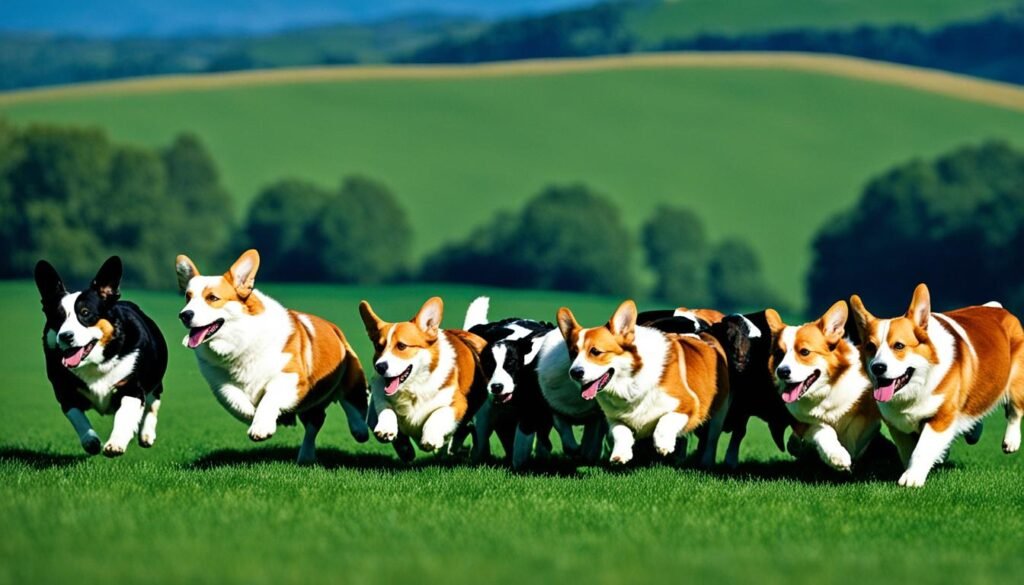
Hailing from Wales, Cardigan and Pembroke Welsh Corgis are beloved herding dogs. They excel at controlling cattle with their strong instincts and agility. The American Kennel Club (AKC) has noticed and praised their hard work and skill.
Small but Mighty Herders
Pembroke Welsh Corgis stand out, standing at 10-12 inches. They weigh around 24-31 lbs for males and 24-28 lbs for females. Despite being small, they are hard workers and can manage livestock effectively.
Cardigan Welsh Corgis have a longer history, going back over two thousand years. Pembroke Welsh Corgis appeared around 1000 AD. Seen on Welsh farms in the 1850s, Pembrokes were more in the south while Cardigans were up north. They both helped Welsh farmers a lot, showing their farming skills.
Popularity as Companion Dogs
Corgis are now popular as pets because of their friendly nature and the ability to fit in anywhere. Pembroke Welsh Corgis, especially, have become more in-demand over the years. Their popularity grew due to their size, easy care, and lovable quirks.
Pembroke Welsh Corgis are described as energetic, friendly, and fun by breeders. They make great family pets. Cardigans, on the other hand, are calmer and more reserved in new places. Both are very smart, loving, and loyal, making them fine companions.
| Breed | Height | Weight (Male) | Weight (Female) | Lifespan |
|---|---|---|---|---|
| Pembroke Welsh Corgi | 10-12 inches (25-30 cm) | 24-31 lbs (11-14 kg) | 24-28 lbs (11-13 kg) | 12-15 years |
| Cardigan Welsh Corgi | 10.5-12.5 inches (27-32 cm) | 30-38 lbs (14-17 kg) | 25-34 lbs (11-15 kg) | 12-15 years |
Today, Corgis aren’t used for large-scale herding like before. Yet, they shine in dog sports and activities. Their intelligence and adaptability impress in agility and obedience. Their status as great friends and skilled workers is set to last for many more years.
Conclusion
Cattle dog types and herding breeds offer a wide variety of looks and behaviors. The Australian Cattle Dog, Border Collie, and others have been key helpers for farmers for many years. They have special skills fit for very specific jobs. Yet, some, like the German Shepherd, have found success in different roles, like in the military or police work. And who doesn’t love the Corgis, serving as much-loved pets?
All herding dog breeds have a few things in common too. They’re hard workers, smart, and fully dedicated to their owners. These traits mean they can do well in many different jobs. But, it’s important for owners to know what each breed needs. For example, the Australian Cattle Dog can live a long life. It often reaches 15 years or even more. Yet, it faces some health issues. So, breeding and health checks are vital for its well-being.
Choosing the right herding dog involves looking at what each type can offer. Knowing about their health and exercise needs is crucial. This helps in making the best choice for a family or a working environment. These dogs, either on a farm or as a family pet, show they are flexible and valuable.
FAQ
What are the most popular cattle dog types and herding breeds?
Some top herding breeds are the Australian Cattle Dog, Border Collie, and more. They include the Australian Shepherd, German Shepherd, Catahoula Leopard Dog, and even Corgis. Kelpies and Curs are also well-known for their herding skills. Each breed brings unique features and a great work ethic to herding.
What traits do herding dogs typically possess?
Herding dogs are fast, agile, and quick to learn. They are always alert and make choices based on what they see. This makes them fun-loving, alert, and very energetic. They need active lives to stay happy and healthy.
What is the history of the Australian Cattle Dog?
The Australian Cattle Dog comes from Australia, where it mixed with dingoes, Dalmatians, Kelpies, and Collies. Thomas Simpson Hall worked to mix many Collies with dingoes. This created a breed known for its hard work and loyalty.
Why are Border Collies considered one of the most intelligent dog breeds?
Border Collies are smart and skilled at many activities. They excel in herding, agility, and service tasks. These abilities make them valuable as both working and family dogs.
Where did the Australian Shepherd originate from?
Contrary to its name, the Australian Shepherd comes from the western U.S. They were first used for herding on farms. They are known for being cheerful, energetic, and having unique looks, like merle coats and two different colored eyes.
Are German Shepherds good family dogs?
A well-trained German Shepherd can be a loyal family member, providing protection and love. They need early socialization and ongoing training to be their best. Their trainability and adaptability suit various roles, making them well-loved for work and home.
What makes the Belgian Malinois stand out as a herding and working dog?
The Belgian Malinois stands out as an exceptional working dog with high intelligence. They were originally herders but now excel in working roles like police work. Proper training and mental challenges are key for their success, even in family environments.
Are Corgis effective herding dogs despite their small size?
Yes, Corgis, like Cardigan and Pembroke Welsh Corgis, do great herding work despite being small. Their short but agile bodies and clever minds help manage cattle well. Beyond herding, their friendliness and adaptability have made them popular as pets.



